Apart from the kitchens and temples of every Indian region, cow ghee is a golden liquid with fragrance that holds particular significance in the hearts of the people. Among the most often consumed goods in India is cow ghee. Apart from the many health advantages it offers and the amazing taste it has, ghee has been firmly ingrained in Indian cultural fabric since ancient times. But as modern lives evolve, it is getting harder and harder to keep this classic dinner front and front in daily life.
This is a difficulty that just becomes more demanding. This paper aims to investigate the timeless relevance of cow ghee by means of an analysis of the ways in which it is used in a variety of activities, ranging from religious rites to health practices, and by looking at the elements that support the fact that this golden elixir keeps being a symbol of India’s cultural legacy. Would you be ready to appreciate the beauty that ghee has? Why not we start straight forward?
Cow ghee, a golden-colored, aromatic material, has been a staple of Indian cuisine over many decades. Because of its usage in cooking, ghee is not just a food but also a symbol of spirituality, wealth, and purity. From the pujas performed in temples to the aromatic curries generated in kitchens, it is used in a variety of events.
Recognized for taste, health advantages, and great cultural value, ghee remains the fundamental driver behind Indian customs, therefore preserving a link between the past and the present. Ghee is prized for taste, health advantages, and great cultural relevance. We investigate in this piece how cow ghee shapes Indian spirituality, cuisine, festivities, and family customs as well as the reasons behind its ongoing popularity in modern Indian life. Particularly, we pay close attention to the manner in which cow ghee has been rather important in Indian society.
Table of Contents
1. The Sacred Heart of It All: Cow Ghee Applied While Engaging in Religious Activities
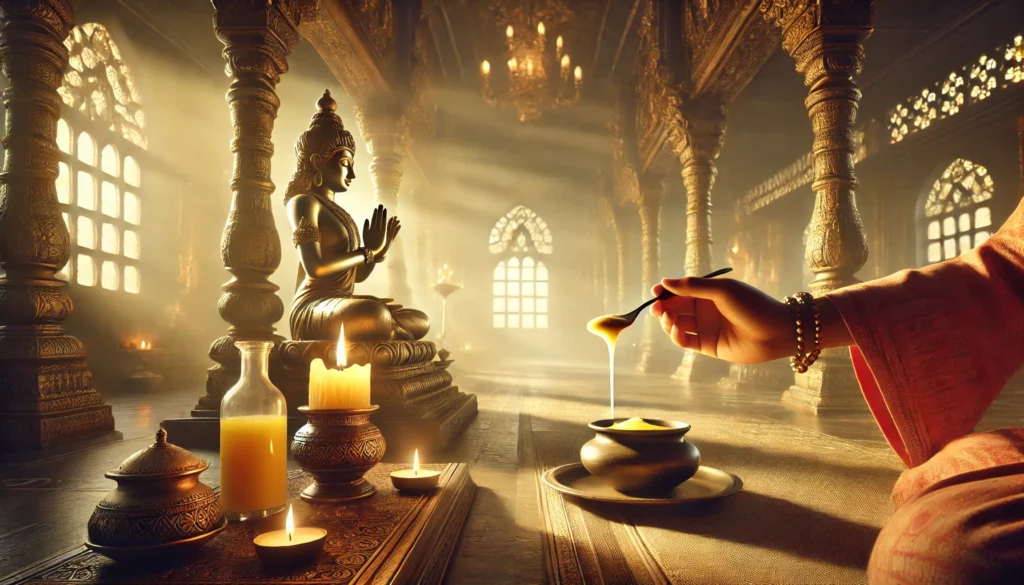
I Would Want to Start by Introducing the Spiritual Relevance of Ghee
Ghee is valued in India not just for its use in cooking but also for its importance as a holy component in the framework of rites carried out for spiritual goals. Over thousands of years, it has been connected with concepts of purity and divinity as well as with whole health and happiness. Hindu philosophy, where ghee is understood as a symbol of the illumination of knowledge and the elimination of darkness, has great bearing on its relevance.
The substance called ghee captures each of these qualities. Apart from being presented as a gift to gods during worship, ghee is supposed to be a means of communication to the divine since it is used in ceremonies to clean the mind and the spirit. something is why one considers something to be a conduit.
Ghee’s use in Pujas and Temples Results in…
One of the most important presents one might provide in temples all throughout India is ghee. It is used in pujas, sometimes referred to as prayers, in many various ways. Among these are making offerings to several gods and burning ghee lamps, sometimes known as diyas. Apart from their supposed light providing, these ghee lamps are also thought to be symbolic of the elimination of ignorance and darkness.
Most people believe that the flame of the ghee diya bestows blessings, peace, and wealth upon the house and the people who presently live there. A lot of other sources confirm this idea. The sight of these vibrant lamps showing up at events like Diwali has come to be associated with the spiritual warmth and joy they convey.
Ayurvedic Medicine: Treatment and the Use of Ghee
Ayurveda, an ancient Indian medical system, shows how strong ghee is said to be in bringing about a condition of equilibrium in the body, mind, and spirit. Well-known for its detoxifying properties, ghee is supposed to assist in toxin elimination from the body and revitalize cells. Another well-known benefit of ghee is body cleansing. Its major participation in the synthesis of several Ayurvedic drugs and tonics makes it highly sought after to enhance mental clarity, longevity, and energy levels. Ghee has been a mainstay of Ayurvedic treatment since its beginnings. It can be regularly drank or used topically for massage and healing needs.
2. Indian Cuisine is Made with the Culinary Delight that is Ghee in Mind
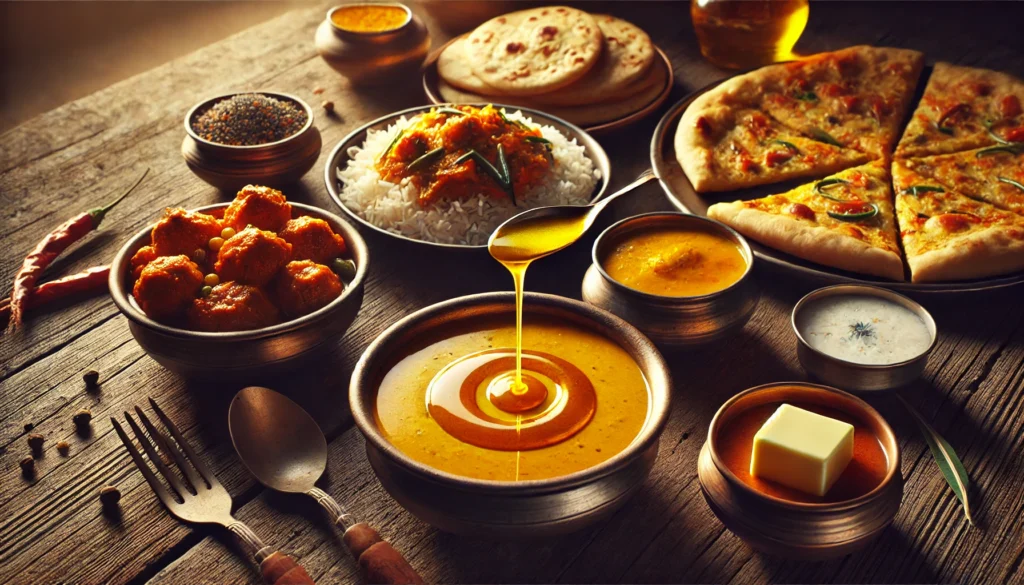
Indian Cookery has Basic Principles like follows:
Ghee is the most often used ingredient in Indian cooking since its taste is unmatched and opulent. With a high smoke point, it can be applied in a wide range of culinary methods including tempering spices and fry cooking. Its high smoke point helps to explain this. Unlike other oils, ghee not only improves the taste of food but also smells clearly, so enhancing the whole eating experience. This is so because ghee smells really unique. Regarding the creation of the strong and savory meals unique to Indian cuisine, ghee is an absolutely essential ingredient. This applies whether one is discussing the buttery richness of the Punjab parathas or the ghee-laden biryanis of Hyderabad.
Our Different Cuisines as well as Ghee Reflect their Respective Cultures
India’s great cultural diversity is reflected in its various cuisines; ghee is the element that ties all of these variances of food together. Ghee is especially used in the Northern part of India in the production of silky, velvety gravies. Some instances of these gravies are those found in Punjabi and Mughlai cuisine.
Furthermore served alongside sambar and chutneys, ghee is often used in southern India to sprinkle over dosas. Ghee is a must on every plate of food since it enhances the taste and nutritional value of regional cuisines. From the festive ladoos in Rajasthan to the daily offerings of ghee rice produced in Kerala, there are countless ways to celebrate ghee. One can enjoy ghee in several ways.
Regarding Ghee, a Superfood’s Reputation
Ghee has attracted more and more interest as a superfood on a worldwide level during the past few years. Conversely, ghee is meant to lower inflammation, strengthen cognitive ability, and help the digestive tract repair. This is so because it has a lot of the short-chain fatty acid butyrate. Usually regarded as a more nutritious substitute than other kinds of cooking fats, ghee is This is so because it has a great concentration of vitamins A, D, E, and K among other vital ones.
Not limited to Indian kitchens, ghee is a flexible substance used in paleo, ketogenic, and gluten-free diets by those concerned about their health anywhere. Many different cuisines call for ghee. Regarding wellness circles all around the globe, a once-traditional kitchen fundamental item is now regarded as a very sought-after component.
3. One Cultural Feature Woven into the Fabric of the Society is the Use of Ghee at Feasts and Other Festivals
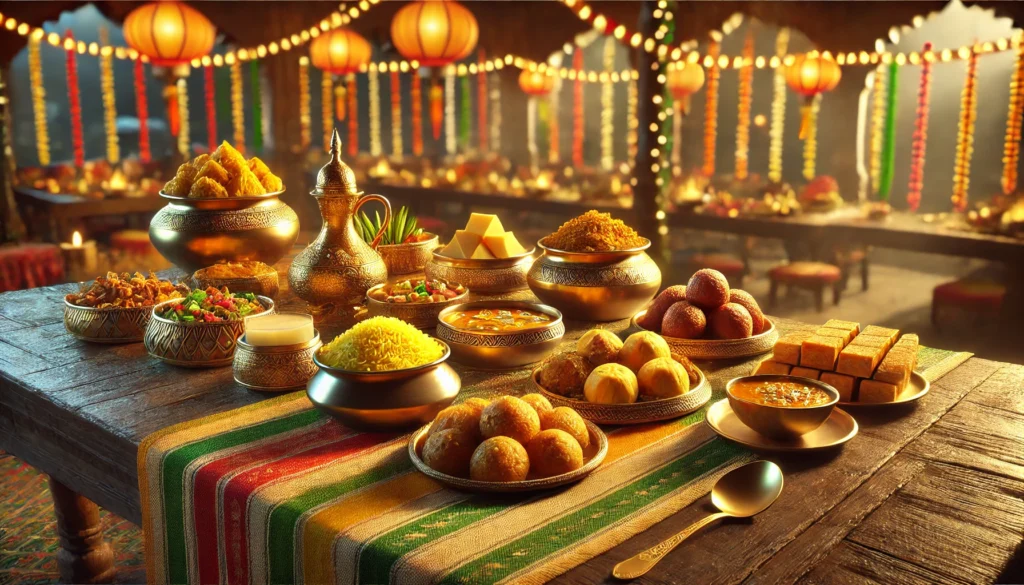
The Value of Ghee in the Most Celebrated Festivals in India
Within the framework of Indian celebrations, which are broad celebrations of culture, family, and spirituality, the use of ghee is a necessary element of the festivities that span across the length of these events. Ghee is used to ignite diyas, which decorate homes, temples, and streets, during Diwali, sometimes called the festival of lights. The festivity revolves much around Diyas. These diyas are meant to be used to represent the victory of light over darkness.
Families similarly get ready to ladoos made with ghee in celebration of Makar Sankranti, a holiday honoring the harvest. They thank you for a plentiful crop during this period and pray for happiness and fulfillment in their particular life. Made during Navratri and Holi, ghee is also essential for the making of delicacies like halwa and gujiya. These treats are created all during the festival period. These mouthwatering delicacies provide the festivities going on a savory and joyful taste.
Ghee and the Customs the Family Has Constant Observed
In Indian homes, the usage of ghee is more than just a culinary ingredient; it also reflects the link and custom that exist inside the family. Mothers and grandmas often teach their kids how to use ghee in the making of different dishes. Usually, these dishes are passed down through generations and then handed on from one generation to the next.
Making ghee at home—from milk or as part of the cooking of a bigger meal—results in the creation of treasured memories that unite families. These times enable households to become closer to one another. Made from scratch, homemade ghee is said to show respect and care and gives every meal some uniqueness. Usually passed down from one generation to the next via the years are these customs.
Celebrations in Every Single Subregion of India
It is well known that ghee is a staple of daily meals all throughout India as well as of great festivals. Ghee is used to create extravagant feasts throughout the duration of wedding celebrations. The feasts are presented to guests along with sweets and stews drenched in ghee. Sharing meals made with ghee helps to strengthen the bonds among family and friends by means of shared experiences. This is so because one can accomplish this by acting to create a loving, friendly, and hospitable environment. Whether it’s a low-key family get-together or a lavish wedding, ghee lends respect to every gathering and a sense of purity to all. Any family gathering will be much enhanced by ghee.
4. Ghee is Thought in Indian Tradition to Represent both Wealth and Cleanliness
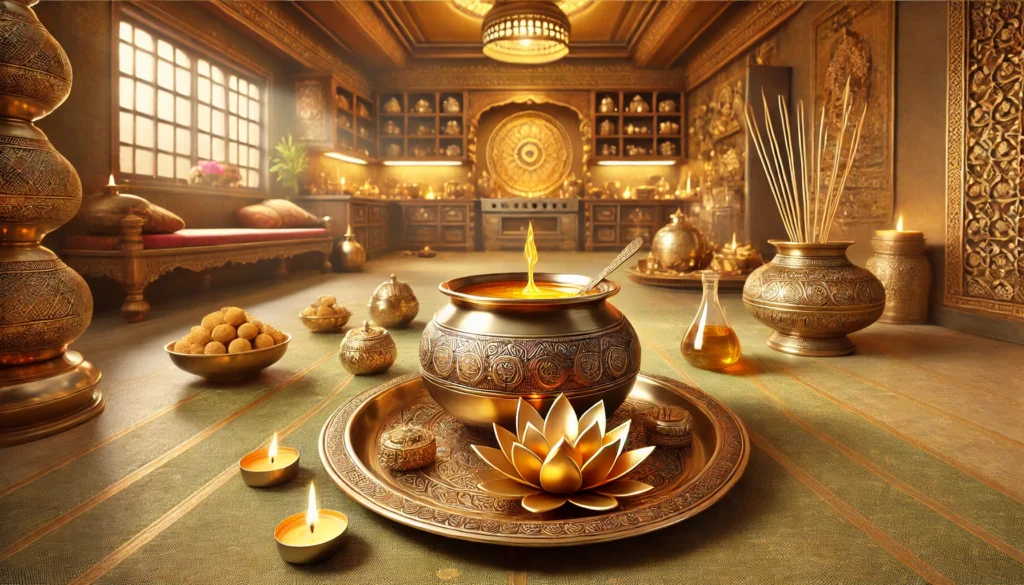
The Customs Aiming at Purity Make use of Ghee.
Ghee is often regarded as a purifying agent; this view holds true in the spiritual as well as the physical spheres. Ghee is used in a variety of Hindu rites aiming at anointing sculptures of gods, cleansing the surroundings, and sanctifying offerings all at once. Its ability to clean not only the surroundings but also the human being reflects the spiritual worth it has. Part of the morning prayers, the symbolic action of anointing one’s forehead with ghee marks the start of a holy and good day and is followed in particular areas.
Ghee as a Gift
Giving ghee as a gift is a custom that has existed for a very long time and is generally linked with prosperity, happiness, and good fortune. Giving jars of homemade ghee is customary when presenting gifts for major life events in India, including marriages, celebrations, and festivals. Offering someone ghee as a gift not only blesses them but also guarantees their pleasure, successful activities, and general well-being. Ghee is a symbol of abundance, hence the person who presents it bears with him the aspirations and desires of a future rich existence.
5. Several Problems Modern Society Deals with is Maintaining the Legacy of Cow Ghee
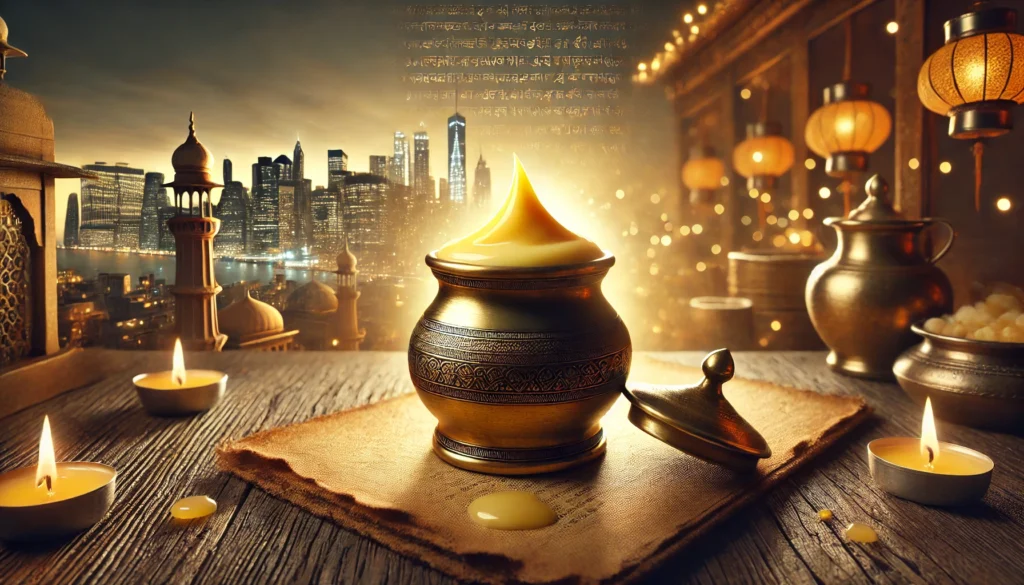
Popularity of Conventional Techniques of Producing Ghee is Declining
Though ghee has a rich cultural background, its mass production is replacing the traditional way of making it more and more. These developments are happening concurrently. Artisan ghee stands apart from industrial ghee, which is usually created from milk produced in a facility, in terms of quality of purity and attention. This is so because the small scale of the artisan production method influences Apart from ethical issues involving animal welfare, the environmental effect of big-scale dairy farming has caused doubts about the direction of ghee production. These issues have surfaced from the above listed elements.
Bringing Artisanal Ghee Back to Life on the Modern Market
In response to the problems that have been raised, there has been a rebirth of interest in the manufacture of ghee using organic, small-scale, traditional techniques. Local artists, many of whom still carry on methods handed down from one generation to the next, are bringing the skill back in the present. These handcrafted manufacturers often get their milk from domestic cows allowed to pasture free-will. This guarantees ethical standards adherence and better quality of the milk. Apart from helping the communities where the farmers who participate in the practice live, the acceptance of these environmentally friendly approaches helps to preserve the legacy.
The Always Growing Need for Ghee in Many Different Nations
Growing numbers of people all around are realizing the benefits ghee provides, and its popularity is increasing in the domains of wellness and medical. Ghee has grown in popularity for use in cooking since it is adaptable and abundant in nutrients. This is a result of more people selecting paleo diets and other diets including the ketogenic ketogenic diet. Apart from the growing availability of ghee in health food stores, chefs all around are starting to include it into their cuisine. Currently working to inform people all around the world about the several benefits ghee offers—in terms of cultural relevance as well as health advantages—are Indian families and chefs.
The Flame of Tradition is Unquenchable
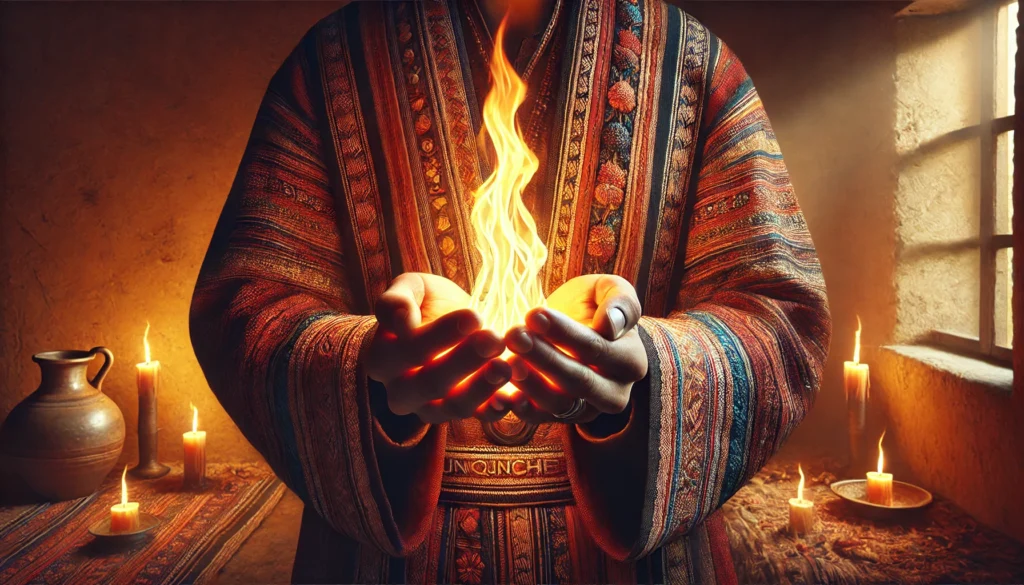
So, this is the flame…
A real emblem of India’s spiritual, gastronomic, and cultural history, cow ghee is still very important in the process of safeguarding Indian traditions’ integrity. Indian customs are kept in part by cow ghee. Ghee is still a sign of purity, wealth, and love that has lasted the test of time whether it is used in ceremonies or by means of its great addition to daily meals. Our environment is becoming more modern by the day, hence it is quite vital that we preserve these customs and keep the ghee flame alive.
Whether it’s for taste, the health advantages it offers, or the spiritual significance it holds, we may honor the legacy our forefathers have left behind by including ghee into our daily life. As it has done for millennia, you should embrace the golden legacy of ghee and let its warmth, richness, and symbolism to enrich your life. A golden legacy is ghee.
FAQs – Frequently Asked Questions
-
What is the spiritual significance of cow ghee in Indian culture?
In Indian tradition, cow-made ghee is seen as a holy substance since it is thought to have divine attributes including purity, brilliance, and divine benefits. This is the case as the general opinion holds that cow ghee has spiritual ability. Religious events such pujas frequently feature it as a means of releasing ignorance and evil from the earth. It is either burned in ghee lamps, sometimes known as diyas, or donated to the gods during these rites. Ayurveda is another field of study that gives ghee’s use great weight. This is so because ghee is thought to have purifying and healing effects fit for the soul as well as the body.
-
How is ghee used in Indian cooking, and why is it preferred over other oils?
Ghee is a basic ingredient in Indian cooking since of its strong taste, high smoke point, and amazing ability to improve the flavor of food. Among the several uses for this item are fry foods, spice tempering, and adding richness to dishes including sweets, biryanis, and curries. Moreover, unlike other oils, ghee keeps its nutritive value even at high temperatures and burns slowly. Apart from this, it leaves behind a taste and scent that is quite important for the complex flavors unique to traditional Indian food. Furthermore, ghee is a better substitute since it contains more vitamins and essential fatty acids than the others that are on the market.
-
What are the health benefits of cow ghee?
A dairy product, cow ghee is frequently utilized by people trying to include a more healthful component to their diet. Apart from being high in butyrate, a short-chain fatty acid that supports gut health, digestion, and the decrease of inflammation, ghee is also rich in vitamins A, D, E, and K, which are fat-soluble vitamins boosting immune system, increasing bone density, and enhancing the brightness of beautiful skin. Moderately consumed, it is well known to increase the metabolism, strengthen the heart, and sharpening mental activity. Moreover considered as a superfood is ghee because of its antioxidant properties as well as the conjugated linoleic acid ( CLA) it contains, which helps to reduce body fat.
-
How is ghee used in Indian festivals and celebrations?
Ghee is a food eaten regularly at the several celebrations and events India throws. Diwali is a celebration of lights, thus ghee is used to light Diyas, lamps used to decorate temples and homes. This serves to represent the victory of light over darkness that took place during the whole festivity. Ghee is used in the traditional treat called til ladoos produced during Makar Sankranti. Made from jagggery and sesame seeds, it is consumed during this holiday. We are honoring the harvest season by doing such. Moreover, ghee is used in the making of sweets like gujiya and halwa during festivities like Navratri and Holi. Meals heavy in ghee are a symbol of affection, plenty, and good fortune in the setting of family reunions. These kinds of events help to improve connections by uniting people.
-
Why should I choose artisanal ghee over mass-produced ghee?
Because it is made using traditional techniques, handcrafted ghee—as opposed to mass-produced ghee—is thought to have far better quality, flavor, and nutritional value. Traditional ghee is made most of the time by extracting milk from cows let to pasture freely. This guarantees that the ghee has a great concentration of nutrients and is free of any possibly dangerous toxins. Slower and more meticulous techniques, such those used by hand producers extracting ghee, tend to preserve the flavor and quality of the output. Buying handcrafted ghee helps you to support environmentally friendly and moral farming methods. You can also help cultural traditions to be preserved. On the other hand, mass-produced ghee would not have the same positive impact on health and could come from milk processed in a facility, so posing ethical and environmental issues.

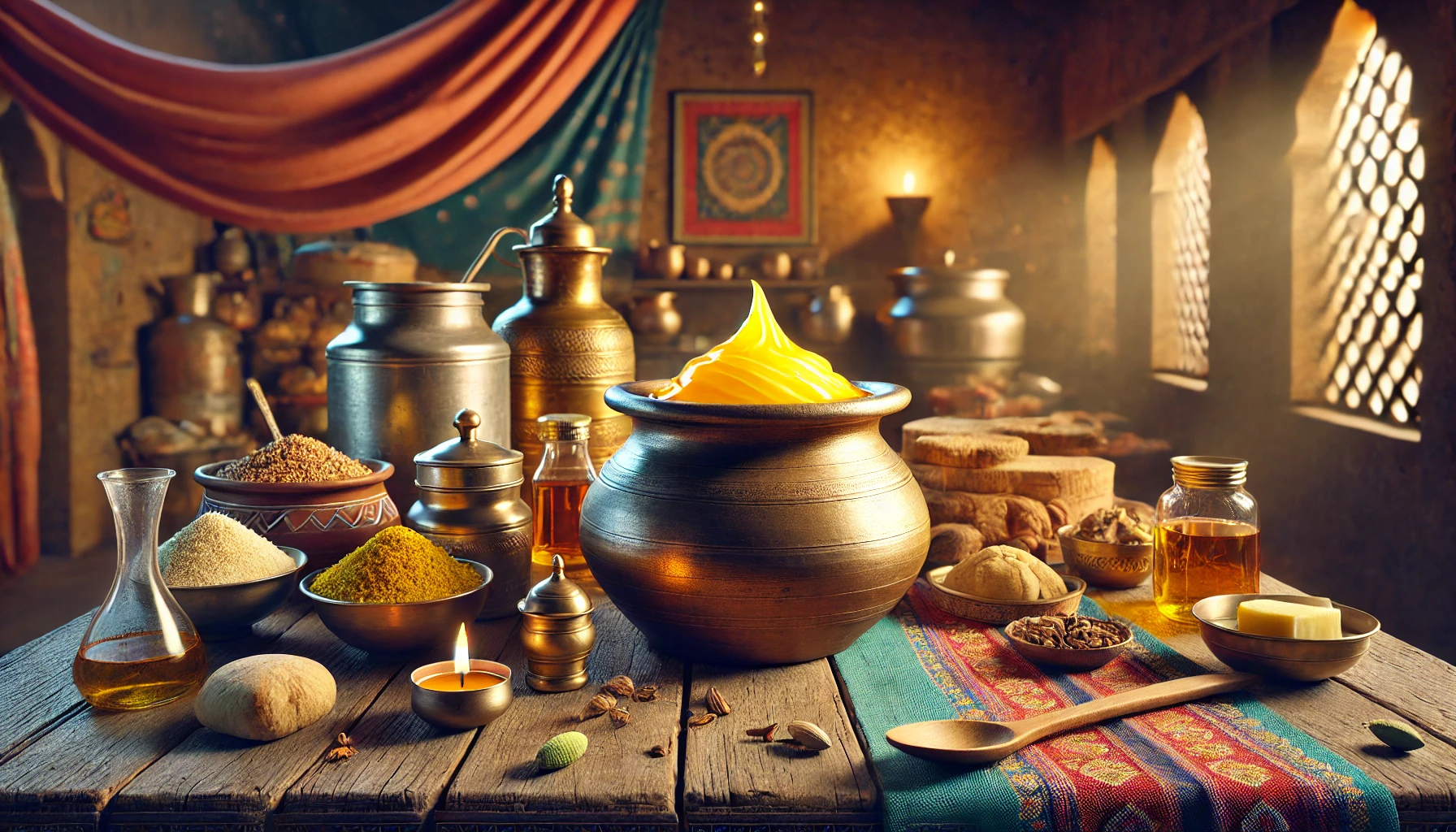
The content in this blog is truly eye-opening. Your perspective on this topic is refreshing! I appreciate the detailed information shared here. I’ve been searching for information like this for a while. This article is a treasure trove of information! Such a helpful article, thanks for posting! I’ve been searching for information like this for a while.
Your writing style makes this topic very engaging. I enjoyed reading this and learned something new. This article is a treasure trove of information! I’m bookmarking this for future reference. Such a helpful article, thanks for posting! The examples provided make it easy to understand. Excellent post with lots of actionable advice! Such a helpful article, thanks for posting! The content in this blog is truly eye-opening.